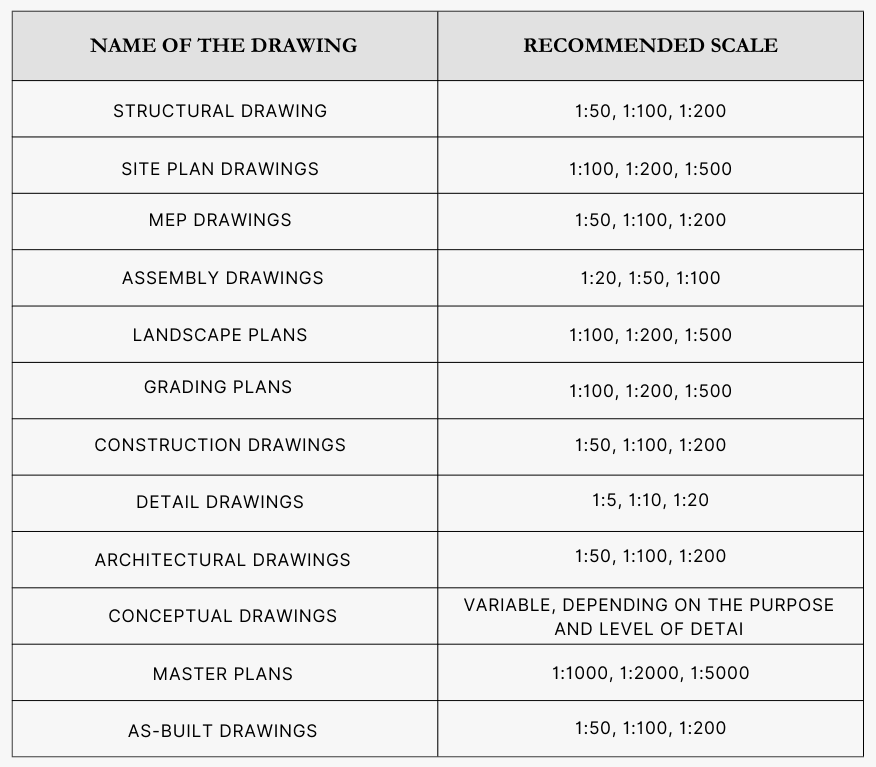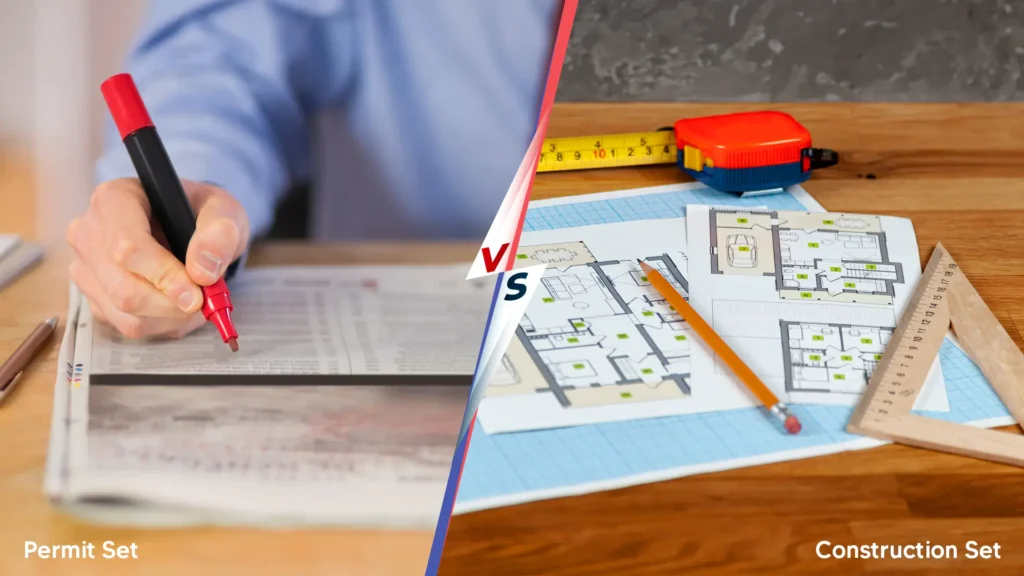A Guide to the World of Civil Engineering Drawings – The Architectural Atlas
In civil engineering, precision and foresight are key. Every project, from skyscrapers to bridges, begins with detailed drawings. These blueprints guide architects, engineers, and builders, ensuring accurate and safe construction. These drawings serve as the backbone of our built environment, ensuring that every component is constructed accurately and safely. This guide explores various civil engineering drawings, their significance, and real-world applications.
What is a Civil Engineering Drawing?
A civil engineering drawing is a detailed blueprint that outlines how to construct a specific project, such as a road, bridge, or building. These drawings use symbols, lines, notes, and measurements to convey the design and requirements, ensuring that engineers and builders understand the exact dimensions and specifications needed for construction.
Civil engineering drawings are vital for project clarity and safety. They provide detailed layouts, structural plans, and utility placements, ensuring that every aspect of a project meets the necessary standards and codes.
Importance of Civil Engineering Drawings
Civil engineering drawings are essential for the successful execution of construction projects. They serve several critical functions:
Accuracy and Precision: These drawings provide precise measurements and specifications, reducing the risk of errors during construction.
Safety Compliance: They ensure that structures comply with safety standards and building codes, minimizing the risk of structural failures.
Coordination: Drawings facilitate communication and coordination among architects, engineers, and builders, ensuring that everyone is on the same page.
Cost Estimation: They help in accurate cost estimation and budgeting, reducing the likelihood of financial overruns.
Legal Requirements: Detailed drawings are often required for obtaining construction permits and approvals from local authorities.
Types of Civil Engineering Drawings
Structural Drawings
Structural drawings focus on a building’s structural elements like beams, columns, and trusses, ensuring integrity and stability. They include foundation plans, framing plans, and details on materials and reinforcements. These drawings are crucial for cost estimation, material procurement, and reducing the risk of structural failures.
Key Components of Structural Drawings
Foundation Plans: Details on footings, piles, and foundation walls.
Framing Plans: Layouts of beams, columns, and floor joists.
Steel Detailing: Specifications for steel components like beams and columns.
Concrete Reinforcement Drawings: Rebar layouts within slabs, walls, and beams.
Real-World Example: The Burj Khalifa in Dubai, required meticulous structural drawings to ensure its stability and safety. These included detailed foundation plans to support the immense weight of the building.
Site Plan Drawings
Site plan drawings provide a comprehensive overview of the construction site, detailing buildings, roads, utilities, and landscaping. These drawings are essential for obtaining necessary permits and coordinating various construction trades.
Key Components of Site Plan Drawings
Site Layout Plans: Property boundaries and building placements.
Grading Plans: Existing and proposed site contours.
Utility Plans: Layout of underground utilities like gas and water lines.
Real-World Example: The construction of the High Line in New York City, a public park built on a historic freight rail line elevated above the streets, relied heavily on site plan drawings to coordinate the placement of pathways, plantings, and utilities.
Mechanical, Electrical, Plumbing & Fire Protection (MEPF) Drawings
MEPF drawings detail the mechanical, electrical, plumbing systems, and fire protection systems of a building. These plans ensure the proper installation of heating, cooling, electrical wiring, and plumbing, promoting overall efficiency and safety.
Key Components of MEPF Drawings
Mechanical Drawings: HVAC systems, including ductwork and equipment locations.
Electrical Drawings: Layouts for switches, lighting, wiring, and power distribution.
Plumbing Drawings: Pipe routing, fixture locations, and connection points.
Fire Protection Drawings: Fire Alarm system layout, Fire hydrants and standpipes, smoke control systems, and sprinkler systems.
Real-World Example: The Shard in London, one of the tallest buildings in Europe, required complex MEP drawings to integrate its advanced heating, ventilation, and air conditioning systems, as well as its electrical and plumbing networks.
Assembly Drawings
Assembly drawings document how various components come together, showing details of joints, connections, and fasteners. These are essential when components are manufactured off-site and assembled on-site.
Key Components of Assembly Drawings
Orthogonal Plans: 2D drawings of details like top, front, and side views.
3D Views: Comprehensive three-dimensional illustrations.
Sectional and Elevation Plans: Cross-sectional views showing internal components.
Real-World Example: The prefabricated modules of the B2 Tower in Brooklyn, part of the Pacific Park development, were constructed off-site and assembled on-site using detailed assembly drawings.
Architectural Drawings
Architectural drawings provide instructions for constructing building structures, including floor plans, sections, and elevations. These drawings specify dimensions, materials, and construction methods, ensuring accurate and efficient building practices.
Key Components of Architectural Drawings
Floor Plans: Layouts of rooms, walls, doors, and windows.
Elevations: Exterior facades drawn from different angles.
Sections: Views that show the interior structure, including walls, floors, and ceilings.
Real-World Example: Sydney Opera House’s iconic design was brought to life through detailed architectural drawings that guided the construction of its unique, shell-like structures.
Landscape Plans
Landscape plans are designs of gardens, walkways, and parking lots, including elements like plants, trees, buildings, paths, and other landscape features. This gives a blend of natural beauty and human design.
Key Components of Landscape Plans
Site Plans: Overall layout of the landscape.
Master Plans: Comprehensive plans for larger areas.
Irrigation Plans: Layout of watering systems for plants.
Real-World Example: The landscape design for the Gardens by the Bay in Singapore required detailed landscape plans to create its futuristic, lush environment.
Grading Plans
Grading plans show the existing and proposed elevations on a construction site, ensuring proper drainage and land use. These plans illustrate the desired slopes and drainage patterns required for water management, often created early in the design process.
Key Components of Grading Plans
Site Elevations: Existing and proposed ground levels.
Drainage Patterns: Layouts showing water flow and management.
Real-World Example: The development of the Denver International Airport required extensive grading plans to manage the large site and ensure proper drainage.
Construction Drawings
Construction drawings are comprehensive guides for the construction process, providing detailed information about dimensions, materials, and methods. They help in accurate cost estimation and material procurement.
Key Components of Construction Drawings
Site Layout Plans: Overall construction site layout.
Sectional Drawings: Cross-sections of the building.
Foundation Plans: Detailed foundation designs.
Real-World Example: The construction of the Panama Canal involved intricate construction drawings to guide the excavation, concrete work, and installation of the lock systems.
As-Built Drawings
As-built drawings are updated to reflect the actual construction conditions and modifications made during the project. These drawings are crucial for maintenance, facility operations, and future renovations.
Key Components of As-built Drawings
Modifications: Changes made during construction.
Final Dimensions: Accurate measurements post-construction.
Comments from Contractors: Notes on any deviations from the original plans.
Real-World Example: The as-built drawings of the Eiffel Tower are essential for ongoing maintenance and any future renovation projects, ensuring the structure’s longevity.
Scale For Each Drawing
There are different scales in which different drawings and plans are prepared. The table for each of the drawings and plan with their scale follows.

Conclusion
Civil engineering drawings are essential blueprints guiding every construction stage. They ensure structural integrity, safety compliance, and efficient coordination among stakeholders. As we appreciate our urban landscapes, we recognize the meticulous planning and craftsmanship in every drawing.










